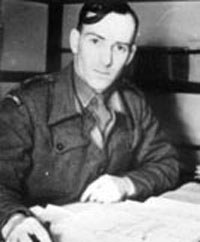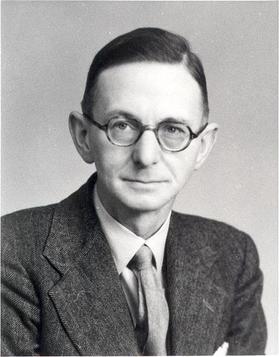
Sutton Hoo is the site of two Anglo-Saxon cemeteries dating from the 6th to 7th centuries near Woodbridge, Suffolk, England. Archaeologists have been excavating the area since 1938, when a previously undisturbed ship burial containing a wealth of Anglo-Saxon artefacts was discovered. The site is important in establishing the history of the Anglo-Saxon kingdom of East Anglia as well as illuminating the Anglo-Saxons during a period which lacks historical documentation.

Color photography is a type of photography that uses media capable of capturing and reproducing colors. By contrast, black-and-white or gray-monochrome photography records only a single channel of luminance (brightness) and uses media capable only of showing shades of gray.

Harry Burton was an English archaeological photographer, best known for his photographs of excavations in Egypt's Valley of the Kings. Today, he is sometimes referred to as an Egyptologist, since he worked for the Egyptian Expedition of the Metropolitan Museum of Art for around 25 years, from 1915 until his death. His most famous photographs are the estimated 3,400 or more images that he took documenting Howard Carter's excavation of Tutankhamun's tomb from 1922 to 1932.

The Royal Photographic Society of Great Britain, commonly known as the Royal Photographic Society (RPS), is one of the world's oldest photographic societies. It was founded in London, England, in 1853 as the Photographic Society of London with the objective of promoting the art and science of photography, and in 1853 received royal patronage from Queen Victoria and Prince Albert.
Martin Oswald Hugh Carver, FSA, Hon FSA Scot, is Emeritus Professor of Archaeology at the University of York, England, director of the Sutton Hoo Research Project and a leading exponent of new methods in excavation and survey. He specialises in the archaeology of early Medieval Europe. He has an international reputation for his excavations at Sutton Hoo, on behalf of the British Museum and the Society of Antiquaries and at the Pictish monastery at Portmahomack Tarbat, Easter Ross, Scotland. He has undertaken archaeological research in England, Scotland, France, Italy and Algeria.
Charles William Phillips was a British archaeologist best known for leading the 1939 excavation of the Sutton Hoo burial ship, an intact collection of Anglo-Saxon grave-goods. In 1946, he replaced O. G. S. Crawford as the Archaeology Officer of the Ordnance Survey. He was awarded the Victoria Medal of the Royal Geographical Society in 1967 for his contributions to the topography and mapping of Early Britain.
Basil John Wait Brown was an English archaeologist and astronomer. Self-taught, he discovered and excavated a 6th-century Anglo-Saxon ship burial at Sutton Hoo in 1939, which has come to be called "one of the most important archaeological discoveries of all time". Although Brown was described as an amateur archaeologist, his career as a paid excavation employee for a provincial museum spanned more than thirty years.

The Dig is a historical novel by John Preston, published in May 2007, set in the context of the 1939 Anglo-Saxon ship burial excavation at Sutton Hoo, Suffolk, England. The dust jacket describes it as "a brilliantly realized account of the most famous archaeological dig in Britain in modern times".

Rupert Leo Scott Bruce-Mitford was a British archaeologist and scholar. He spent the majority of his career at the British Museum, primarily as the Keeper of the Department of British and Medieval Antiquities, and was particularly known for his work on the Sutton Hoo ship-burial. Considered the "spiritus rector" of such research, he oversaw the production of the monumental three-volume work The Sutton Hoo Ship-Burial, termed by the president of the Society of Antiquaries as "one of the great books of the century".
Edith May Pretty was an English landowner on whose land the Sutton Hoo ship burial was discovered after she hired Basil Brown, a local excavator and amateur archeologist, to find out if anything lay beneath the mounds on her property.

The Sutton Hoo helmet is a decorated Anglo-Saxon helmet found during a 1939 excavation of the Sutton Hoo ship-burial. It was buried around the years c. 620–625 CE and is widely associated with an Anglo-Saxon leader, King Rædwald of East Anglia; its elaborate decoration may have given it a secondary function akin to a crown. The helmet was both a functional piece of armour that would have offered considerable protection if ever used in warfare, and a decorative, prestigious piece of extravagant metalwork. An iconic object from an archaeological find hailed as the "British Tutankhamen", it has become a symbol of the Early Middle Ages, "of Archaeology in general", and of England.

The Sutton Hoo purse-lid is one of the major objects excavated from the Anglo-Saxon royal burial-ground at Sutton Hoo in Suffolk, England. The site contains a collection of burial mounds, of which much the most significant is the undisturbed ship burial in Mound 1 containing very rich grave goods including the purse-lid. The person buried in Mound 1 is usually thought to have been Rædwald, King of East Anglia, who died around 624. The purse-lid is considered to be "one of the most remarkable creations of the early medieval period." About seven and a half inches long, it is decorated with beautiful ornament in gold and garnet cloisonné enamel, and was undoubtedly a symbol of great wealth and status. In 2017 the purse-lid was on display at the British Museum.

Nigel Reuben Rook Williams was an English conservator and expert on the restoration of ceramics and glass. From 1961 until his death he worked at the British Museum, where he became the Chief Conservator of Ceramics and Glass in 1983. There his work included the successful restorations of the Sutton Hoo helmet and the Portland Vase.

Peter Charles van Geersdaele was an English conservator best known for his work on the Sutton Hoo ship-burial. Among other work he oversaw the creation of a plaster cast of the ship impression, from which a fibreglass replica of the ship was formed. He later helped mould an impression of the Graveney boat, in addition to other excavation and restoration work.

Charles Green (1901–1972) was an English archaeologist noted for his excavations in East Anglia, and his work on the Sutton Hoo ship-burial. His "signal achievements" were his East Anglian excavations, including four years spent by Caister-on-Sea and Burgh Castle, and several weeks in 1961 as Director of excavations at Walsingham Priory. Green additionally brought his "long experience of boat-handling" to bear in writing his 1963 book, Sutton Hoo: The Excavation of a Royal Ship-Burial, a major work that combined a popular account of the Anglo-Saxon burial with Green's contributions about ship-construction and seafaring.

Sutton Hoo Helmet is a 2002 sculpture by the English artist Rick Kirby. A representation of the Anglo-Saxon helmet by the same name found in the Sutton Hoo ship-burial, it was commissioned by the National Trust to suspend outside an exhibition hall at the Sutton Hoo visitor centre. At the opening of the centre, the sculpture was unveiled by the Literature Nobel laureate Seamus Heaney on 13 March 2002. It remained in place, dominating the entrance of the exhibition hall, until 2019, when it was moved to the entrance to the Sutton Hoo site.

The Dig is a 2021 British drama film directed by Simon Stone, based on the 2007 novel of the same name by John Preston, which reimagines the events of the 1939 excavation of Sutton Hoo in Suffolk, England. It stars Carey Mulligan, Ralph Fiennes, Lily James, Johnny Flynn, Ben Chaplin, Ken Stott, Archie Barnes, and Monica Dolan.
Angela Care Evans,, is an archaeologist and former Curator in the department of Britain, Europe, and Prehistory at the British Museum. She has published extensively on the Sutton Hoo Mound 1 artefacts and early medieval metalwork.

Tranmer House is a country house in Sutton Hoo, Woodbridge, Suffolk, England, dating from 1910. The house is located on the Sutton Hoo Anglo-Saxon burial site, and in 1938 was the home of Edith Pretty. In June 1938, Pretty employed Basil Brown to undertake the excavation of a range of burial mounds on the estate, leading to Brown's discovery in May 1939 of a ship burial, "one of the most important archaeological discoveries of all time". The house is now owned by the National Trust.
Hallam Ashley FRPS was a British professional photographer who, amongst other things, photographed buildings for the National Buildings Record for nearly 40 years. A book of his photographs of East Anglia was published in 2010.














